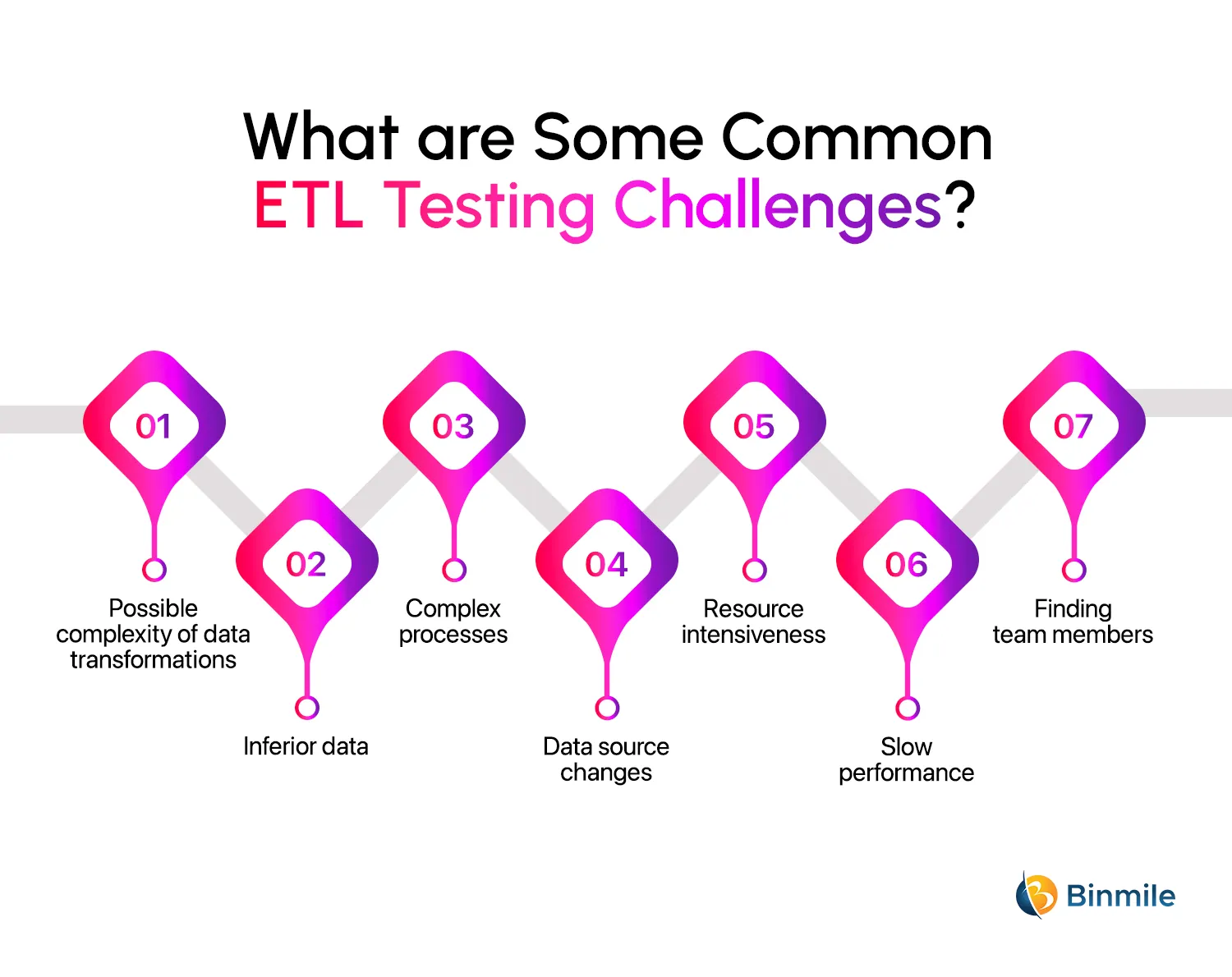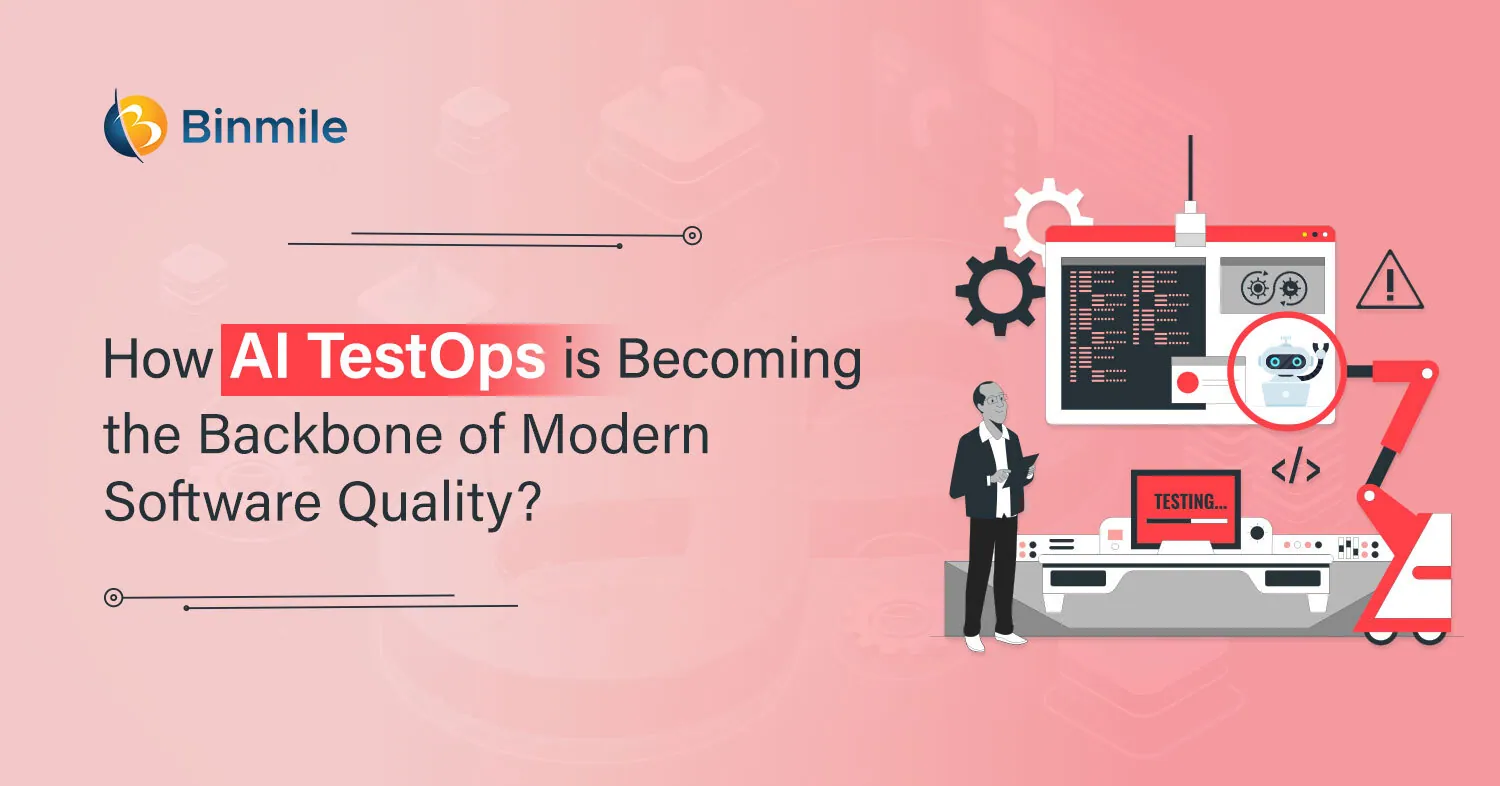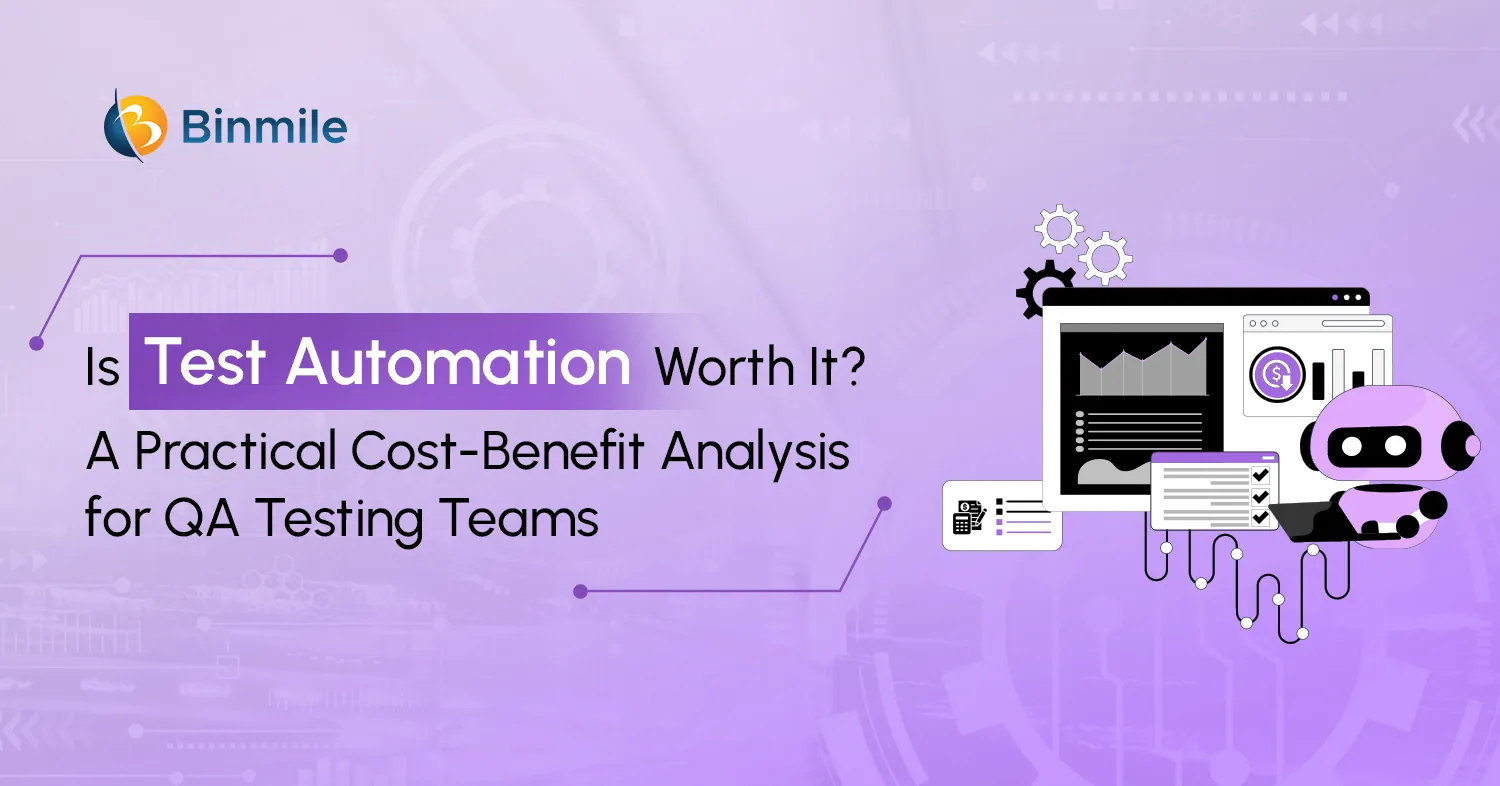These days hundreds of thousands of applications are building around. But not all of them are simple applications, some are integration applications as well that connect two or more apps perfectly to run processes without a hitch and keep data in sync. They allow users to refrain from using several applications simultaneously, enabling developers to create apps that utilize existing systems and services. But do you know what? Transferring your data from an existing system to a new one is not a piece of cake. This process consumes a lot of time and resources and eventually, you will come to know that the data is incomplete or inaccurate. Not only it will turn out to be a costly mistake, but it could result in costly business decisions based on incorrect data. That is the main reason many business owners opt for professional ETL Testing services, where ETL stands for Extract Transform Load process.
So, if you are planning to incorporate and migrate your data to a new system, ETL Testing is a process you should put your hard-earned money on. It acts as a safety net for your data that helps you rest assured of accuracy, completeness, and reliability. Be informed that ETL tests can be challenging owing to the volume of data involved in it. What else? The data consists of different types of information, which makes the testing process a bit more complicated. But it doesn’t have to be complicated and if you have the right tools and resources at your disposal, you can master the ETL assessment process in no time. Now, let’s take this discussion further by diving in:
What is ETL Testing?

Extract Transform Load (ETL) refers to the process of fetching a huge amount of data from various data sources, modifying and restructuring them for reporting and analytics purposes, and storing them in a data warehouse. ETL Testing helps validate if the concerned ETL process is functioning properly or not. This type of testing is necessary for the ETL process because such evaluation is performed for highly critical data.
Now that you have learned what is ETL in software testing, it is time to grasp various types of ETL tests:
- Testing the accuracy of the data
- Completeness of data (whether any parts are missing)
- Validating that the data hasn’t changed during the transition and aligns with business rules
- Examining metadata to ensure it hasn’t changed during the transition
- Checking the syntax of formally-defined data types
- Reference testing against organizational dictionaries and master data
- Interface and performance testing for the ETL system
When Does One Need ETL Testing?
The ETL process is generally related to Data Warehousing projects but in real life any kind of bulk data movement from a source to a target can be known as ETL. Large organizations often need to shift application data from one source to another for data integration or data migration purposes. ETL Testing is a data-oriented testing process to verify that the data has been transformed and stored in the target as expected.
Please remember that poor data quality impacts business value to a great extent. In fact, recent research by a top-level management consulting company has revealed that companies believe poor data quality is the reason for an average loss of $15 million per year. This indicates how crucial it is to perform ETL Testing once you have developed an integration application for your organization.
What Are the Typical Challenges Faced in ETL Testing?
There are many instances when you can come across certain difficulties when performing ETL tests. But if you recognize them early in the ETL process, it can help avoid bottlenecks and costly delays. Some of those challenges are:

- Possible complexity of data transformations: The transformation of massive datasets can be a time-consuming and complicated process.
- Inferior data: Most of the time data is messy and full of errors. ETL Testing requires clean and precise data to get excellent results.
- Complex processes: Complicated data integrations and business processes can trigger some serious troubles.
- Data source changes: Changes to data sources affect the completeness and accuracy of data quality.
- Resource intensiveness: ETL testing can be resource-intensive when dealing with considerable and complicated source systems.
- Slow performance: Slow processing or sluggish end-to-end performance triggered by sizeable data volumes can affect data accuracy and completeness.
- Finding team members: It’s no easy feat to find people with ETL and data quality expertise.
Explore the full potential of your data. Get ETL testing solutions to ensure seamless data integration, accuracy, and reliability across your systems.

How to Leverage AI in ETL Testing?
Yes, there are a few data testing tools in the market that take advantage of AI to automate the ETL Testing of data warehouses, business intelligence reports, big data lakes, and enterprise-grade apps with complete DevOps functionality for continuous testing. The data validation and ETL evaluation process is complicated and time-consuming without an automated ETL testing tool in place. And to create tests between source and target data stores, one needs a few things, such as robust SQL skills and lots of time.
The new AI-driven technology used in the latest data testing tools is a generative AI module that creates data validation tests automatically, including transformational tests using data mappings. The use of such cutting-edge technology offers a major shift in ETL testing. Just to let you know, the average data warehouse project has somewhere between 250 to 1,500 data mappings. And creating tests for every mapping needs almost 1 hour per test. Now, with the integration of AI in state-of-the-art data testing tools, test creation takes place within minutes, converting data mappings into tests written in the data store’s native SQL language with negligible human intervention from a low-code or no-code solution.
In short, the recent AI-powered data testing tool makes the most of Artificial Intelligence to turn data mappings into data validation and ETL tests in every data store’s native SQL language with the highest possible accuracy.
List Benefits of AI-based Data Testing Tool
- It sharply reduces the time to create tests and analyze results
- It mitigates the need for skilled testers
- It enhances data quality owing to a much quicker and more comprehensive testing cycle
- It helps increase ETL Testing coverage up to 100%
Data Quality Testing: The Cornerstone of ETL Success
Data Quality Testing in ETL processes is of profound importance for multiple reasons:
- Data quality testing helps in detecting and rectifying data bugs, anomalies, and inconsistencies early in the ETL process. This ensures that data-related errors are resolved before they spread throughout the system and affect downstream processes and analytics. Timely detection and addressal of data quality issues help enhance the overall integrity and reliability of the data.
- Data quality directly affects the preciseness and reliability of in-depth business insights originating from a vast amount of data. Only by carrying out comprehensive data quality testing, businesses can ensure that the data being processed and transformed during ETL is complete, consistent, and accurate. This will help reassure that the resulting data is credible and reliable, empowering informed decision-making and accurate reporting.
- Data quality testing in ETL assists in maintaining compliance with mandatory requirements and industry standards. In certain industries, such as retail, finance, and healthcare, where personal and confidential information is processed, ensuring data governance and compliance is extremely important. All in all, this type of testing ensures alignment with data governance policies, privacy regulations, and most importantly, industry-based data standards.
- Last but not least, data quality testing improves data integration efforts by allowing smooth data flow across several systems and databases. By verifying data formats, addressing inconsistencies, and making sure of data compatibility, organizations can accomplish successful data integration and prevent data silos.
How Does Data Quality Management Support Compliance in ETL?
Data quality management plays a key role in ensuring that ETL processes align with industry regulations and standards. As a result, it helps safeguard the organization from legal and financial consequences. It also offers a structured approach to handling confidential information and sticking to compliance orders.
Thus, adhering to data governance and compliance requirements helps:
- Set up data management procedures that comply with GDPR (General Data Protection Regulation), HIPAA (Health Insurance Portability and Accountability Act), and the rest of the regulatory frameworks
- Simplify data traceability and lineage for inspecting and reporting purposes
- Recognize and resolve data-related risks quickly
- Implement controls to handle data access and avoid unauthorized data exploitation
- Make sure that data retention and archiving protocols are followed during the ETL process
ETL Testing Secrets: Best Practices for Flawless Data Migration

1. Emphasize Analysis of the Data
It is immensely imperative to understand source data and what happens to them during the ETL process. Having an in-depth understanding of ETL mappings and transformations and a complete analysis of source data can fix many ETL issues early on.
2. Clean Unhealthy Data in the Source System
As far as possible, try not to let data quality issues pass into the ETL pipeline. Therefore, it is advised to diagnose them early and work with data custodians to clean source data. This proactive approach helps improve data quality in AI by ensuring that only accurate and reliable data feeds into your systems.
3. Look for a Great Tool That Supports Your Data Sources
The biggest benefit of using cutting-edge ETL Testing tools is that they can generate the SQL scripts automatically that check your transformations, emerging as a massive time saver. However, you must know that every data source has specific characteristics and a few transformations are non-standard or somewhat complicated. Thus, it is recommended to search for a robust ETL system that supports your data sources and examine them against sample data to learn if it can generate the desired transformations perfectly.
4. Create Various Tests for Data Validation
In every phase of the data pipeline, it makes sense to create tests that verify the data that goes in and ensure the concerned data underwent correct transformations. Creating a process of “checkpoints” at which data stops for testing enables you to promptly diagnose and solve problems.
5. Remember to Monitor ETL Tasks
Just because ETL tasks are working, doesn’t mean they’re working in the right fashion. Even a bite-sized change like a change of data syntax, a fresh set of values, or an extra column can break ETL batches. As per a leading ETL Testing tool maker, identifying these issues early, fixing them, and resuming data flow is essential for maintaining the confidence of stakeholders in the ETL process.
6. Invest in Error Handling, Logging and Alerting
An ETL test is not something that you create, use, and discard. The test cases created for ETL Testing are an important codebase that is repetitively used by your organization. Treat these test cases with utmost care and attention, for example, you can implement error handling for unexpected situations, log everything, and develop informative alerts and notifications.
7. Load Incrementally to Deal with Scale
When working with plenty of historical data in a data warehouse, the only way to handle and make sure of efficient ETL performance is incremental load. Sit with the designers of the ETL process to make sure that the data is loaded incrementally to make all stages of ETL Testing and execution effortless to run and troubleshoot.
8. Performance is of Utmost Importance
Just so you know, in large ETL deployments, everything fluctuates on performance. An ETL task can take its sweet time to run, interrupt data flows, delay updates, annoy decision-makers, and also make it challenging to run tests on realistic amounts of data. For that reason, it is necessary to monitor performance and get a sense of where the bottlenecks are. Then you can improve your scripts or update your systems when necessary to ensure successful ETL Testing.
Further Reading : Data Engineering Best Practices
Want to enhance your software quality? Rest assured of bug identification and optimal performance by opting for our comprehensive software testing services.

The Bottom Line
Now that we are concluding this primer, you must know that ETL testing is a kind of business testing that involves business analysts, software developers, database administrators, and end-users. It requires the knowledge of the software development life cycle, ETL policies, and the right method to write SQL queries. A large number of organizations treat ETL as a challenge, but the truth is that it is highly beneficial for them. It is extremely important to protect the data from loss and update them to fulfill the requirements of the market. Besides this, if you want to avail promising ETL Testing services anytime soon, please do not forget to get in touch with service representatives of a renowned software testing company.









